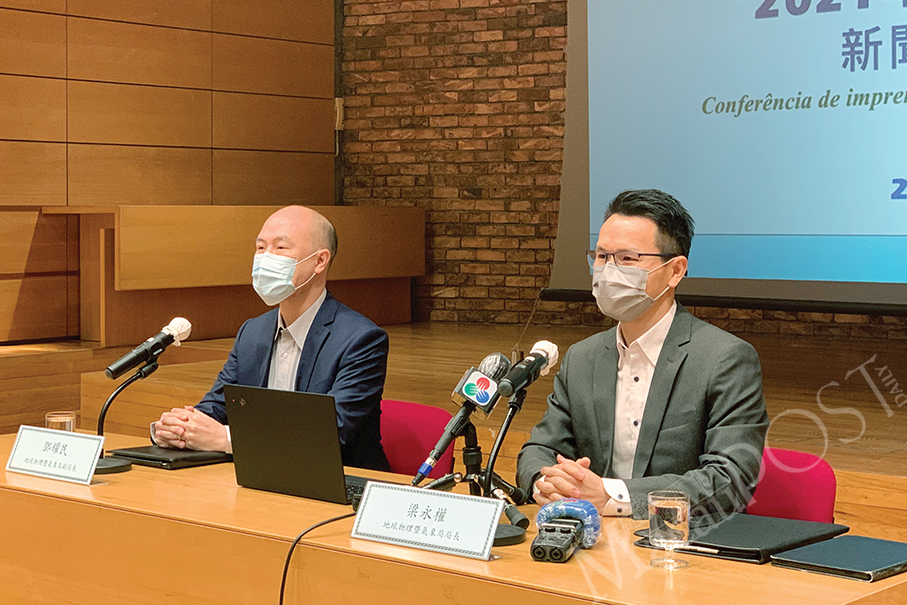Macau Meteorological and Geophysical Bureau (SMG) Director Leong Weng Kun told reporters yesterday that his bureau is expecting five to eight typhoons to affect Macau this year.
Leong made the remarks during a press conference about the World Meteorological Day 2021 at the bureau’s headquarters in Taipa.
Leong said that this year the bureau expected that a normal to above average amount of typhoons would affect the city this year, and at least one super typhoon would hit Macau between July and September. He also said that the bureau expected the first typhoon to affect Macau before or at the beginning of June. He underlined that this year’s typhoon season might be longer than usual, adding that it might last until mid-October.
Leong also said that his bureau was predicting that this year’s rainy season would fall between April and September. He said that his bureau expected the amount of rainfall to be normal or below average this year. He also said that this year’s weather would be as hot as normal as or even hotter than usual.
Leong underlined that the average temperature in the past 30 years or so has been gradually increasing. He noted that from 1981 to 2010, the average highest temperature stood at 25.6 degrees Celsius, while the average highest temperature between 1991 and 2020 stood at 25.9 degree Celsius, adding that the average highest temperature increased 0.3 degree Celsius during that period.
Leong also noted that the average temperature between 1981 and 2010 stood at 22.6 degree Celsius, while between 1991 and 2020 the average temperature was 22.8 degree Celsius. He pointed out that there is a 0.2 degree Celsius increase in Macau’s average temperature. Leong also told reporters that the average lowest temperature also increased 0.2 degree Celsius.
SMG Deputy Director Tang Iu Man added that the La Niña phenomenon still continues, pointing out that the phenomenon would gradually disappear in the next two to three months. He also said that the La Niña weather phenomenon might reappear by the end of the year.
According to Wikipedia, La Niña is a complex weather pattern that occurs every few years, as a result of variations in ocean temperatures in the equatorial band of the Pacific Ocean. The phenomenon occurs as strong winds blow warm water at the ocean’s surface away from South America, across the Pacific Ocean towards Indonesia.
Reporters asked him whether there is a chance of having low precipitation this year, Leong said that the precipitation over the last 30 years had not changed much, adding that the humidity level only has a 1 percent difference between 1991 and 2020 compared to the data between 1981 and 2010.
When the media ask him how the bureau would improve its weather forecast system, Leong said that the observatory would improve its announcement system in order to let residents know “more accurately” when a typhoon is approaching.
Tsunami warning system
Leong also said that the bureau would launch a tsunami warning system in the third quarter of the year. He acknowledged that Macau has a low risk of being affected by a tsunami but stressed that people must always be prepared for the worst. He added that the bureau would add more weather stations and air quality monitoring stations to ensure the reliability of its weather forecasts.

Macau Meteorological and Geophysical Bureau (SMG) Deputy Director Tang Iu Man (left) and Director Leong Weng Kun give a press conference at the bureau’s headquarters in Taipa yesterday. Photo: Prisca Tang







